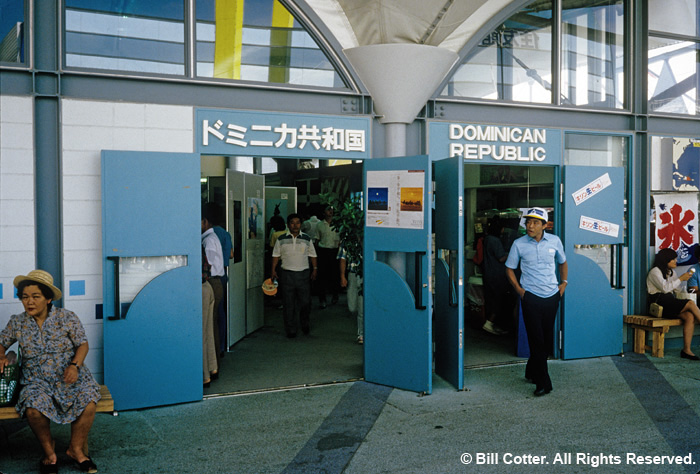Dominican Republic
“Environment, Culture, Economy, Folk Art”
Since 1492, when it was first discovered by Columbus, this tropical paradise has developed into its own unique culture as the result of influences from its native Indians, Africans, French, Spaniards, and others. Located in the Caribbean Sea and blessed with an exceptionally gentle climate, this country has beautiful beaches of white sand and limpid water, and valleys where flowers bloom all the year round. Its main exports are agricultural products and mineral resources such as coffee, cocoa, tobacco, gold, bauxite, and ferronickel. For geographical reasons, its main trading partners are the countries of North America.
A PRE-COLUMBIAN HERITAGE Three display areas look at tourism, environment, and the economy and offer entertaining exhibits on such things as natural resources, history, and folk art. In the area of tourism, the collection of pre-Columbian sculpture over 600 years old deserves special attention as it represents the heritage of the Taino Indians, of whom none now remain. These old carvings are deeply imbued with the traditions, customs, and artistic creativity of the time.
COFFEE AND PIŇA COLADA In the economy zone, there is a display of the export items mentioned above, and a wealth of information on matters such as foreign trade and overseas investment. A special attraction here is the chance to taste (free of charge, of course) some Dominican coffee. Piña colada made with sugarcane rum, coconut cream, and pineapple juice is also available. A visit to this area will refresh and relax you. In the environment zone, the theme of the display is harmony between the beautiful, bountiful natural world and human life.

Not being a coffee drinker I passed on the free sample, opting instead to check out the piña colada. On a hot day it was very welcome indeed. (CD #5 Set 10 #23)
